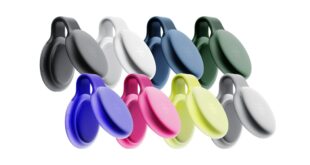Is your New Year's resolution to hit up the gym? Read this first

Sweat, heavy breathing, warm temperatures and lots of people — the gym is the perfect environment for bacteria to thrive in, which is why wiping equipment down is a normal part of gym etiquette.
But does a quick wipe really eliminate all those germs? CBC's Marketplace swabbed equipment at several popular national gym chains to find out which surface harbours the most bacteria.
With training and supplies from an accredited laboratory in Mississauga, Ont., Marketplace visited some of the largest for-profit gym chains: three GoodLife Fitness, three Anytime Fitness and three Planet Fitness locations in the Greater Toronto Area.
- Watch the full Marketplace episode, Germy Gyms, Friday at 8 p.m., 8:30 p.m. in Newfoundland, on CBC-TV and anytime on CBC Gem or YouTube.
"Our own microbes are absolutely fine, but the minute that we start touching other people's microbes, especially if they're pathogenic, it can lead to infection," said microbiologist and self-proclaimed "germ guy" Jason Tetro.
While you're more likely to get sick from someone breathing heavily next to you, there are a few other things lurking at the gym that you should be wary of.
"Staphylococcus aureus is the big one," said Tetro, who explained that contact could result in a skin infection for those with open sores or cuts. One particular strain of staphylococcus, known as MRSA, is antibiotic-resistant and Health Canada warns that it can be found on gym equipment.

Experts also recommended testing for yeast and mould, which tend to grow in warm, damp environments and can cause various conditions, such as yeast infections and athlete's foot. Elevated levels could indicate a lack of proper cleaning, as these organisms are harder to kill than most bacteria.
Marketplace also tested for total bacterial count, where elevated levels could indicate how long it's been since a surface has been cleaned and how effective the process was at removing germs.
At each gym location, after consulting with experts, CBC journalists swabbed five popular pieces of equipment — an elliptical, a barbell, a dumbbell, an exercise mat, a yoga ball — as well as the shower floor, to determine microbial counts.
Here is a countdown of each surface in Marketplace's investigation, from least to most germy.

The elliptical machine had the lowest bacteria count of the surfaces, which doesn't surprise Tetro.
"When you think about it, there's not a lot of contact going on," he said. "The surface is really easy for you to get that cloth on there, and you're going to put on some really good pressure in order to clean it."

The dumbbell was germier than the elliptical, which experts said was likely due to the textured grip.
"It's really difficult to get enough pressure in there with the wipe to actually clean it down," Tetro said. "You're always going to be finding some kind of microbial concentration there — what you want to do is use the disinfectant to be able to minimize it."

Like the dumbbell, the barbell has a grippy texture that can make it difficult to clean. One of the barbells swabbed had particularly high levels of yeast.
"The realization of yeast on a surface is not overly surprising," said Tetro, adding that it is a natural part of the human microbiome. He added that elevated levels could mean someone deposited the yeast after "not doing a very good job of cleaning their hands after taking care of an infection."

At first glance, the yoga ball appeared to be covered in dirt. But that can be deceiving.
"If it looks dirty, that doesn't necessarily mean that it's germy," said Tetro. "Dirt is just inorganic material. It's not alive. No one cares about it. And we actually get a lot of people focused on dirt. And they clean, clean, clean. But they're not actually disinfecting."
The yoga ball still had elevated levels of bacteria compared to most of the other equipment swabbed.

The germiest piece of equipment Marketplace found was the exercise mat, with almost eight times the amount of bacteria as the yoga ball.
The mats had especially high levels of staphylococcus, which is found on healthy people, but certain types, like MRSA, could cause infections in others.
While CBC didn't specifically test strains of staphylococcus, Tetro still found these results concerning.
"There has to be some weakening of the immune system that can lead to infection. So if you're going [to the gym] and you happen to have a cut, then there's a likelihood it could get into your skin," said Tetro. "We always recommend that if you're going to work out any time you have some exposed skin or a cut for a wound, you cover that up with a bandage."
What's lurking in the gym showers?

Although not a piece of equipment, the shower blew Marketplace's other results out of the water (pun intended). Journalists swabbed an approximately 10 x 10 cm surface next to the drain on shower floors. On average, the gym showers CBC swabbed had more than four times the amount of bacteria than the mat.
Marketplace found elevated levels of yeast, mould and staph in showers. Tetro says the running water and warm environment create the perfect place for microbes to grow.
"That's where viruses can hide, that's where fungi can hide … [leading to] warts and athlete's foot … And then you take your bare foot, you step on it, and now all of a sudden you have an exposure." You don't need a cut or open wound to potentially be infected with warts and athlete's foot.
All gyms that Marketplace visited had signs encouraging people to wipe equipment down and had cleaning supplies. But CBC didn't find any cleaning equipment in the shower area for gym-goers to use.
Tetro says the best way to protect yourself in the shower is to create a physical barrier by wearing flip-flops.
Does wiping down work?
Tetro says even if gym-goers are wiping equipment before and after using it, they're probably not using the disinfectant in the intended way.
All disinfectants have a contact time required to work, ranging from 30 seconds up to 30 minutes. Common cleaners, like a 1:500 chlorine bleach solution, three per cent hydrogen peroxide solution or 70-90 per cent isopropyl alcohol, all require a 10-minute sit-time to disinfect vegetative bacteria, some viruses and fungi, according to Public Health Ontario.
None of the GoodLife, Anytime Fitness and Planet Fitness locations Marketplace visited had clear instructions on how long to let the disinfectant sit.
"That's the big problem," said Tetro. "As a result, all people are doing is spreading, not killing [germs]."
Companies respond
Marketplace asked Planet Fitness, Anytime Fitness and GoodLife Fitness about the lack of cleaning instructions in the gym, and the levels of microbes found at their locations. All declined a request for an interview.
In written statements, all companies said they're committed to providing a safe and clean environment for their employees and customers.
Planet Fitness added that it encourages members to wipe down equipment before and after use, and to stay home if they're feeling unwell.

GoodLife Fitness wrote that it shared Marketplace's findings with its own cleaning experts and that it is "always reviewing our cleaning program to look for improvements."
A spokesperson for Anytime Fitness wrote that regular exercise can "significantly lower risk" for illnesses.
It added that bacteria is "ubiquitous in our environment and can never be completely eliminated even with the most thorough sanitation practices."
The Fitness Industry Council of Canada, which represents 6,000 fitness facilities across Canada, says CBC's results are "anomalies rather than a reflection of our industry at large."

Add some “good” to your morning and evening.
A variety of newsletters you'll love, delivered straight to you.
*****
Credit belongs to : www.cbc.ca
 MaharlikaNews | Canada Leading Online Filipino Newspaper Portal The No. 1 most engaged information website for Filipino – Canadian in Canada. MaharlikaNews.com received almost a quarter a million visitors in 2020.
MaharlikaNews | Canada Leading Online Filipino Newspaper Portal The No. 1 most engaged information website for Filipino – Canadian in Canada. MaharlikaNews.com received almost a quarter a million visitors in 2020.







